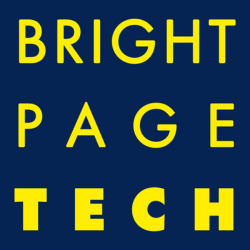Text on many digital displays is designed to resemble a page in a book. This does not harness the dynamic, interactive, customisable potential of electronic screens. The current format is not designed with user experience in mind, but to be economical on space. For the visually impaired, the ‘steady-eye strategy’ is recommended, but no tool exists to achieve this. Lawyers and other professions have low productivity in reading-based tasks. The paragraph format does not fit well on small screens.
Predictive text allows machines to take on some of the burden of writing, by using predictable patterns in writing. BrightPage Tech is offering predictive text for reading. Like writing, there are patterns in the process of reading that can be predicted, allowing the machine to lighten the reader’s load.
When reading a line of text, our eyes do not move in a smooth, continuous movement; rather they move in a series of short, rapid jumps (saccades) and fixations. BrightPage’s core innovation is to make the text on the screen mimic these movements. Using a bank of eye tracking data, eye movements have been reverse engineered into an algorithm that takes any English text and presents it dynamically to optimise it for reading. The reader can relax and allow the electronic display device to do the hard work.

The first product in development aims to help some of the 285 million blind and partially sighted people worldwide. It enables them to use the ‘steady-eye strategy’, recommended when reading eccentrically. It is the only tool that targets this. Further products will target reading from small displays, speeding up reading-based tasks and immersive eBooks, with the company aiming to take advantage of the LegalTech AI market, which is growing at 36% annually.
BrightPage is currently validating the product market fit and making use of its partnerships with the Royal Academy of Engineering and Innovate UK.
Associated Programme

